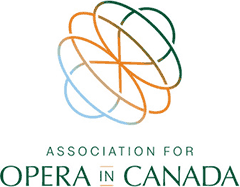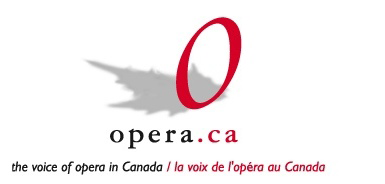Last month Manitoba Opera was pleased to present the company’s very first livestream concert – The Sopranos of Winnipeg – which was broadcast from the stage of the Centennial Concert Hall on November 7.
Sheldon Johnson, Director of Production, who is used to planning for and making live fully staged big opera productions happen, was charged with making the livestream become a reality and had to quickly jump into an entirely new approach to a staged event.
He shares some of the process below:
When did you start planning for the livestream?
In the fall, when the WSO announced their intention to produce a season’s worth of streamed concerts from the stage of the Concert Hall, we realized that a concert featuring a reduced orchestra and solo singers was possible. We already had a relationship with the folks at AVentPro who have been providing us with projection equipment for our fully staged productions. AVentPro provided all of the gear and the necessary crew to produce the stream. We produced the concert onstage as we would normally – with the exception of adding all of the necessary COVID safety protocols and, of course, the fact that there was no audience in the Hall.
What kind of equipment was required for the livestream?
For any stream, you need a microphone to capture the audio and a camera to capture the video. The signals from each are fed to a computer or an encoder which converts the signals to a format for transmission over the internet. Finally, you need an internet connection with adequate bandwidth to support the signal. Because we had more than one microphone and more than one camera, we needed additional equipment: an audio mixing console, a device to control cameras remotely, and another to switch between different cameras to create the final visual presentation.
How many cameras were used?
Nine cameras in total – four set up in the theatre and five on stage. Three of the cameras set up amongst the seats had operators, one was locked off. Four of the cameras on stage were controlled remotely and one was locked off.
How were the singers miked?
There were numerous microphones. Some were placed above the stage and others out in the theatre. The intent was to produce an ambient sound experience for the home audience that would be similar to what they would hear if they were seated in the hall.
How long did it take to set up all the equipment?
We started setting up at 9 am Friday and we were ready to go (mostly) at 1 pm for the afternoon rehearsal.
How many people were on the AVent Pro team during the livestream?
There were three AVent crew backstage (director/switcher, remote camera operator, stream technician) and three camera operators in the theatre.
What was the most difficult aspect of setting up for a livestream?
I wouldn’t say anything was particularly difficult or challenging in the set-up of the livestream – the crew looked after all of that. However, having never done anything similar to this made things uncomfortable in that there were always concerns about things potentially going wrong that were beyond our control.
What were the protocols that had to be put in place in order to proceed with this event?
The WSO have put together an extensive list of very strict COVID safety protocols to help ensure that they can produce concerts this year. In order to partner with the WSO to produce our concert, we agreed to work with them to tailor our backstage protocols to match theirs. This included keeping the physical contact between our singers/staff and the orchestra members to the bare minimum required.
No one other than venue staff, performers, and essential production staff were allowed in the building for the event. The orchestra musicians arrived at the Concert Hall backstage entrance and were screened for COVID symptoms at the door. They then followed a pre-determined route through the backstage area to get to their place(s) on stage.
The singers were directed to arrive at the Concert Hall prior to the WSO members in order to avoid congestion at the entrance. They were asked to remain in their dressing rooms until the orchestra was seated on stage. Once the orchestra was in place, the singers were able to go to the wings.
Masks were required by all in attendance. Masks were only allowed to be removed by the musicians when onstage and by the singers immediately prior to singing.
Current Government restrictions do not allow for an intermission in the middle of the performance, and the WSO is limiting their performances to under 90 minutes for COVID safety purposes.
Safety protocols also prevented us from having more than one singer perform at any given time – hence no duets or ensembles.
Finally, safety protocols did not allow for our regular hair and make-up staff to work on the event, as they would have been required to come in close contact with the singers.
We are happy to report that, four weeks after the fact, no one involved with the event has displayed any COVID-related symptoms or tested positive for COVID-19.


















